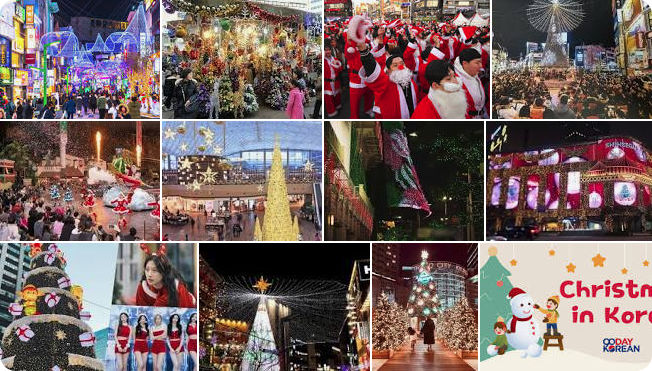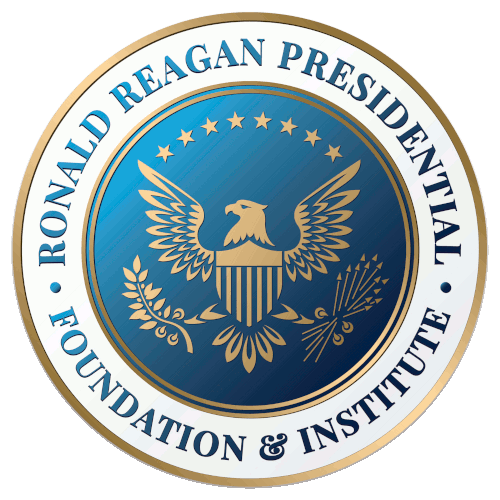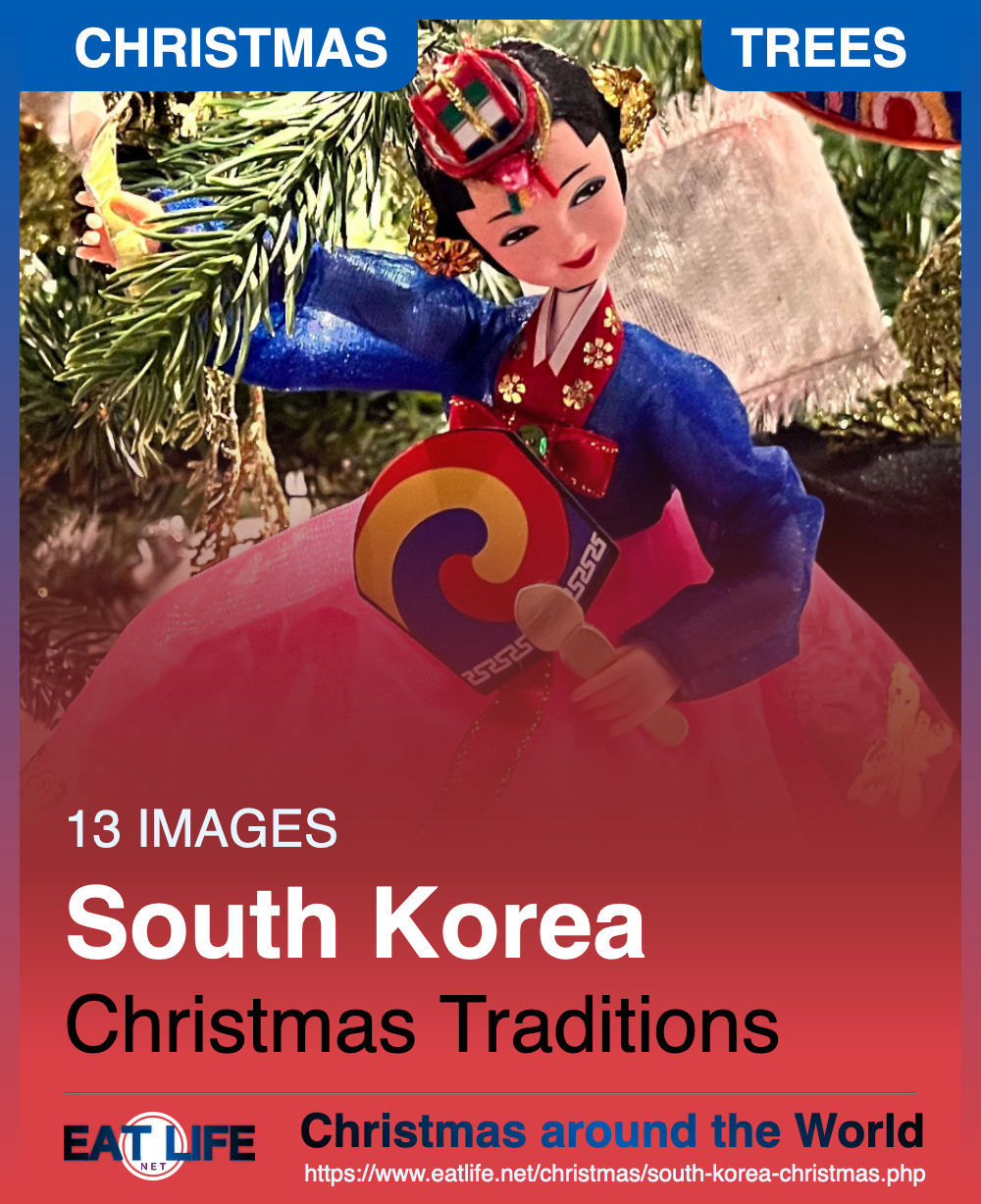CHRISTMAS:
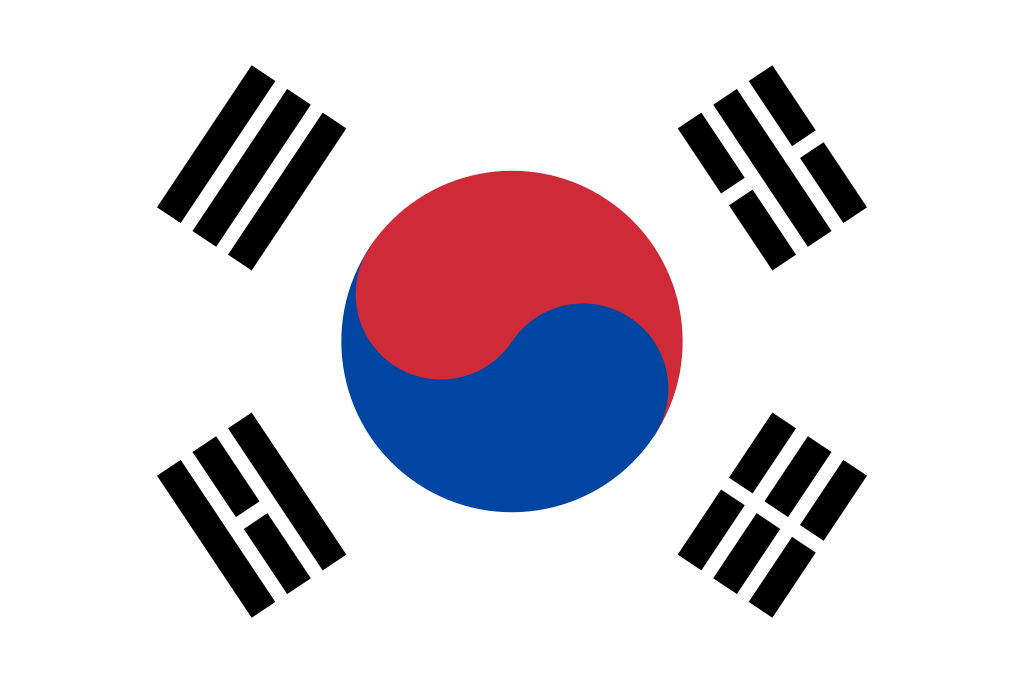
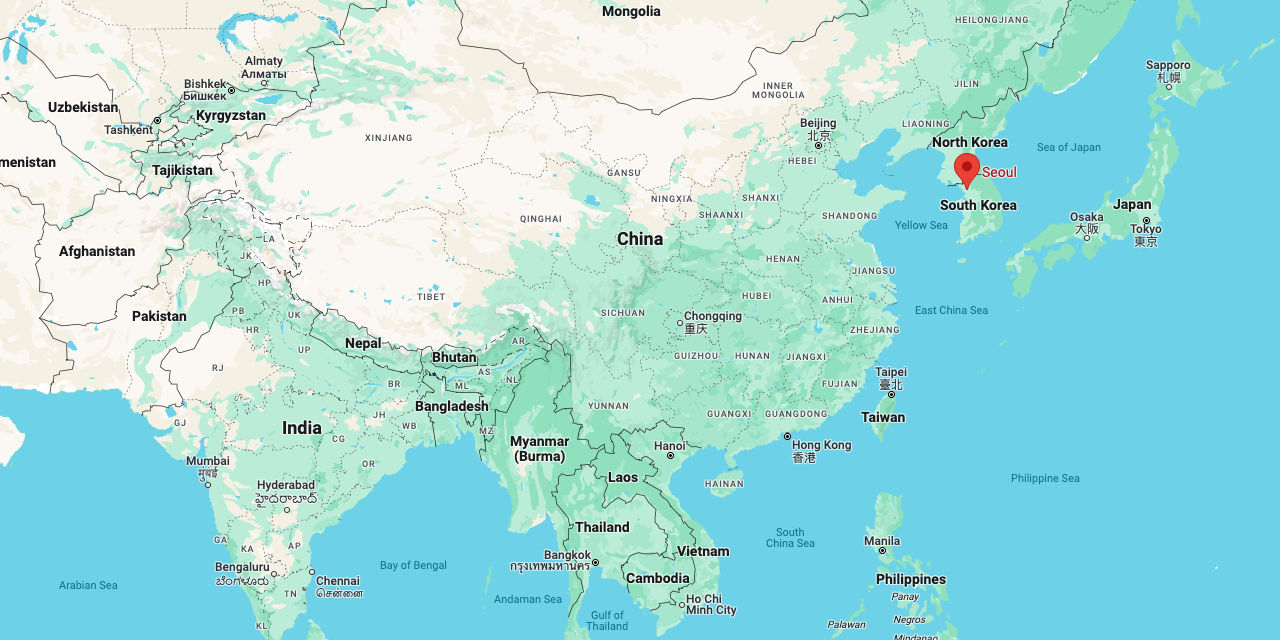
https://www.google.com/maps/place/Seoul,+South+Korea

| HOW TO SAY MERRY CHRISTMAS: | |
|---|---|
| In Korean | Meli Keuliseumaseu |
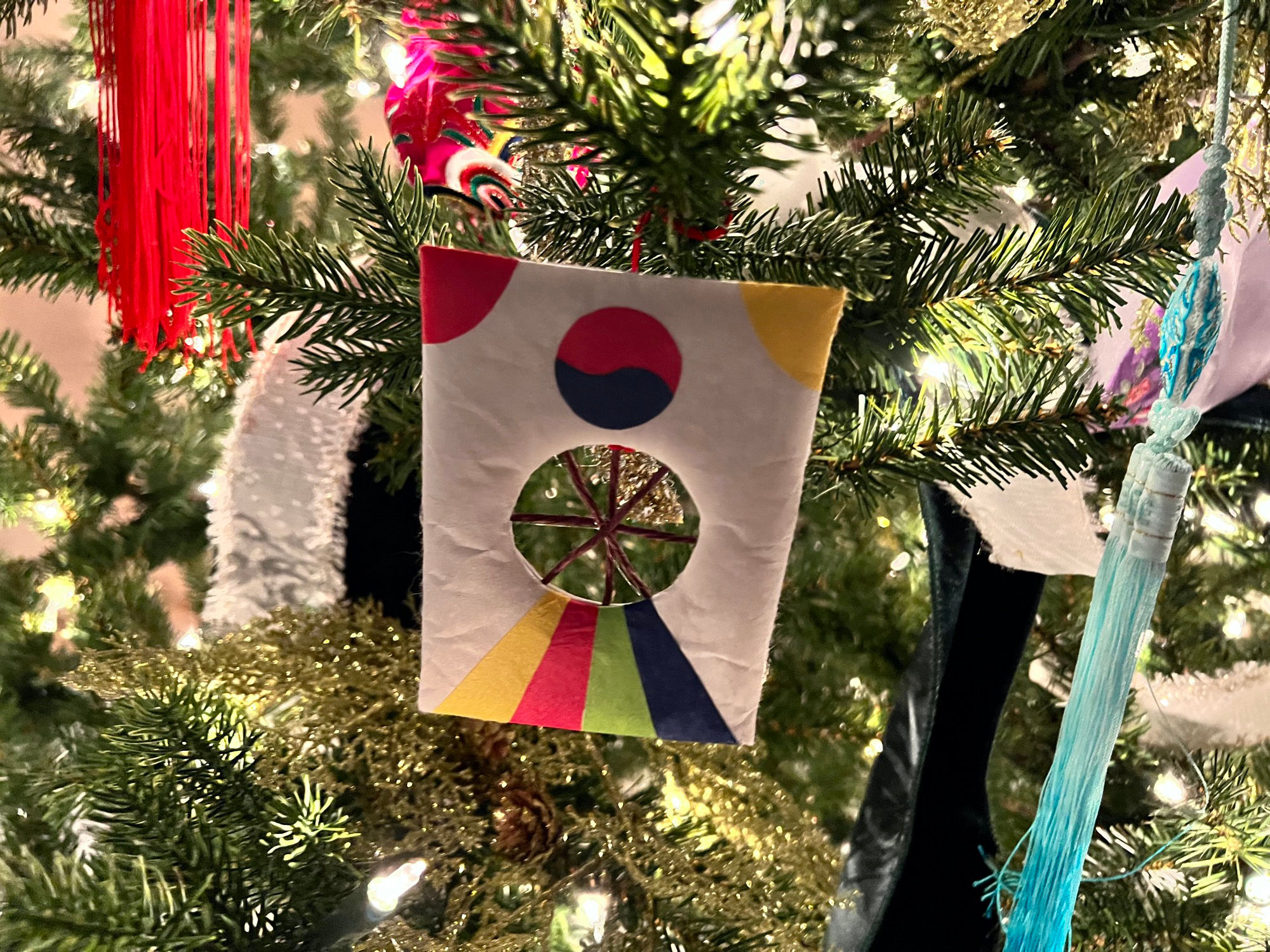


WHYCHRISTMAS.COMChristmas in South Korea
There are more Christians in South Korea (the Republic of Korea) than in many other Asian countries such as China and Japan, so Christmas is celebrated more widely. Christians make up about 25-30% of the population; with about 15% of people being Buddhist and 56% of people not having a faith or religion. (The Philippines is the Asian country with the most Christians).Christmas is an official public holiday in South Korea - so people have the day off work and school! But they go back on the 26th. There's a longer official winter break in the New Year.
- Churches are decorated with lights and many have a bright red neon cross on top (all the year!) so that goes very well with the Christmas lights! Most churches will have a service on Christmas day. Going to Church for Christmas is becoming more popular, even among non Christians.
- Department stores put on big displays of decorations. There's also an amazing display of lights in the capital city, Seoul. The lights are all over the city center including the bridges over the Han River.
- Some people (especially Christians and westerners who live in South Korea) will have decorations at home including a Christmas tree.
- Presents are exchanged and a popular present is money! Giving actual gifts has become more popular, but giving money is still very common.
- Santa Claus can also be seen around Korea but he might be wearing red or blue! He's also known as Santa Kullosu or Santa Grandfather.
- A popular Christmas food is a Christmas Cake, but it's often a sponge cake covered in cream brought from a local bakery! Or you might even have an ice cream cake from a shop like Baskin Robbins!
Merry Christmas in Korean is Meri krismas or Seongtanjeol Jal Bonaeyo or Jeulgaeun Krismas. Christians can say Sungtan Chukhahaeyo to celebrate the birth of Jesus.If you live in North Korea (Democratic People's Republic of Korea) Christmas will be very different. Being a Christian is 'officially' allowed but you can go to prison, or even be killed for being a Christian or even having a Bible. Christians in North Korea have to meet in secret and any celebrations of Christmas will also be held in secret.
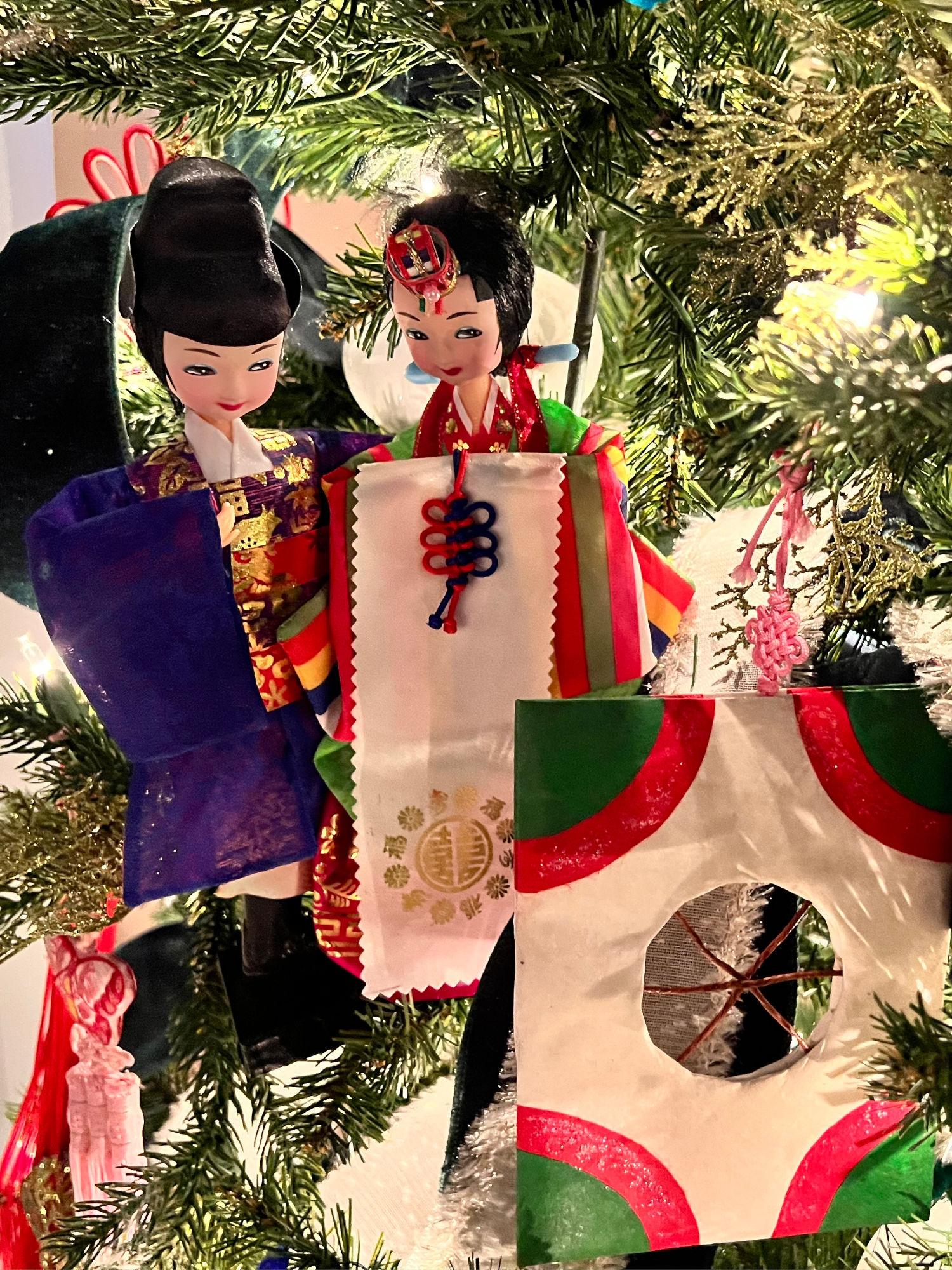

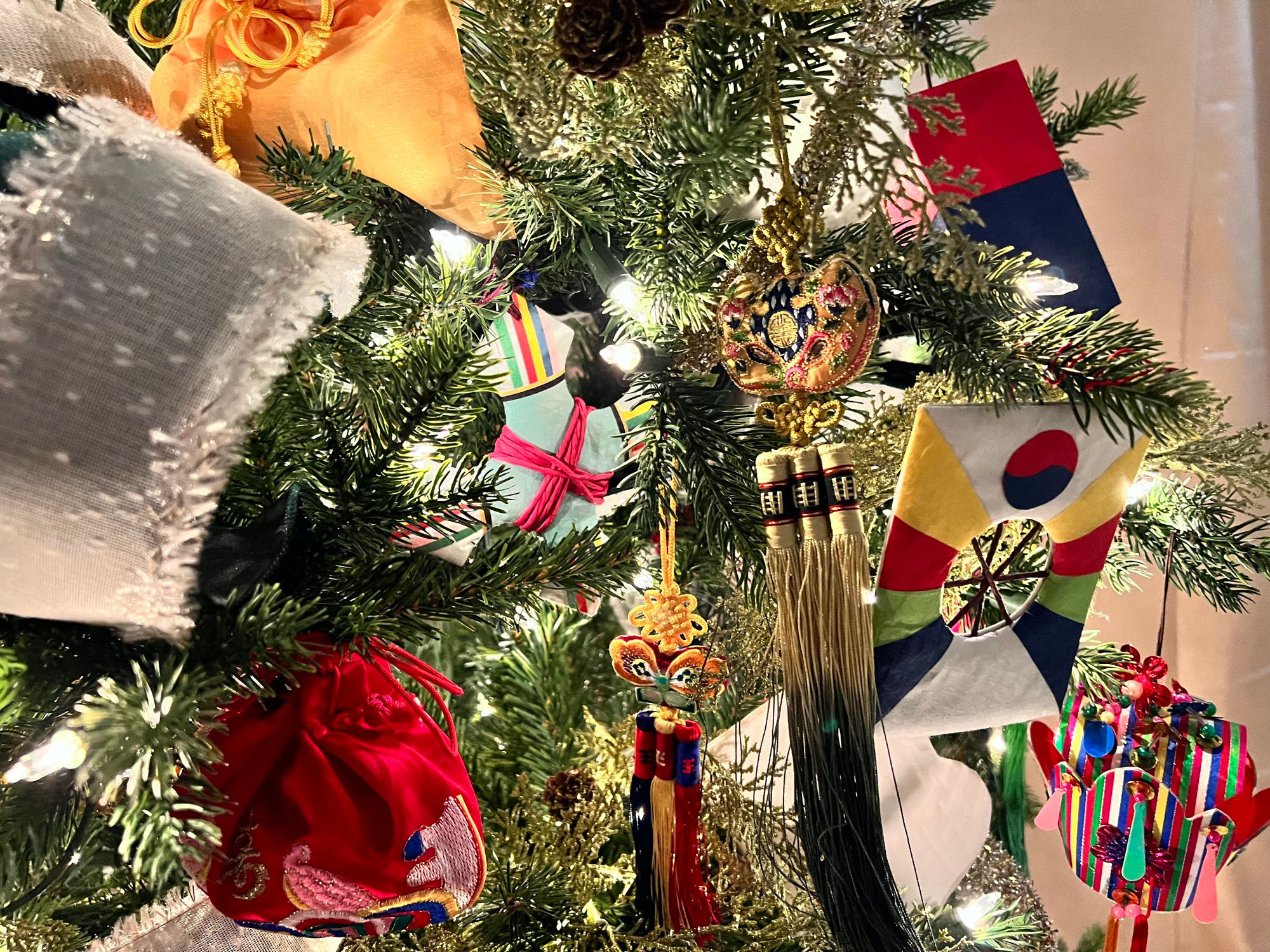



WORLD HOLIDAY TRADITIONSHoliday Traditions of South Korea
There are more Christians in South Korea than in many other Asian countries like China or Japan-about 25-30% of the population. South Korea is ranked second globally for its number of active Christian missionaries, and hosts the world's largest Pentecostal church in its capital city, Seoul. Additionally, South Korea is the only East Asian country to recognize Christmas as a national public holiday, so schools, government offices, and many businesses are closed for the day.However, despite a significant and active Christian population, much of the celebrating on Christmas in South Korea is secular. This disparity is because the commercial Christmas culture arrived and settled in Korea well before Christianity. While Christian Koreans attend mass or church services on Christmas Day, much of the nation views the day as an opportunity for romance. This is because South Korea already celebrates two family holidays-Chuseok, dubbed the "Korean Thanksgiving", on the 15th day of the 8th lunar month, and Seollal, the Korean New Year, which is usually on the second new moon after the winter solstice. Therefore, Christmas more closely resembles Valentine's Day.
There are plenty of activities and events for couples to enjoy. Hotels like the Conrad Seoul and the Grand InterContinental offer Christmas packages including romantic cheese platters and red wine, Christmas cakes, jazz music, and fine dining experiences. Low-priced "love motels", with check-in times starting at 10 PM, are booked months in advance.
That isn't to say there isn't any family feasting or gift giving on Christmas. Christmas buffets are very popular in Seoul, where you'll find everything from roasted turkey to seafood. Many parties reserve their tables well in advance. Rather than piles of presents, gifts are typically limited to one, and monetary gifts are especially popular. And no Christmas is complete without Santa Claus, also known as Grandpa Santa, who you'll find donning not only red robes, but blue as well.
Expect plenty of the traditional European Christmas decorations, like lights, garland, wreaths, and towering pine trees laden with tinsel and baubles, adorning the cities across the nation. One popular Christmas food mentioned earlier is the Christmas Cake, a sponge cake covered in cream typically bought from a local bakery.



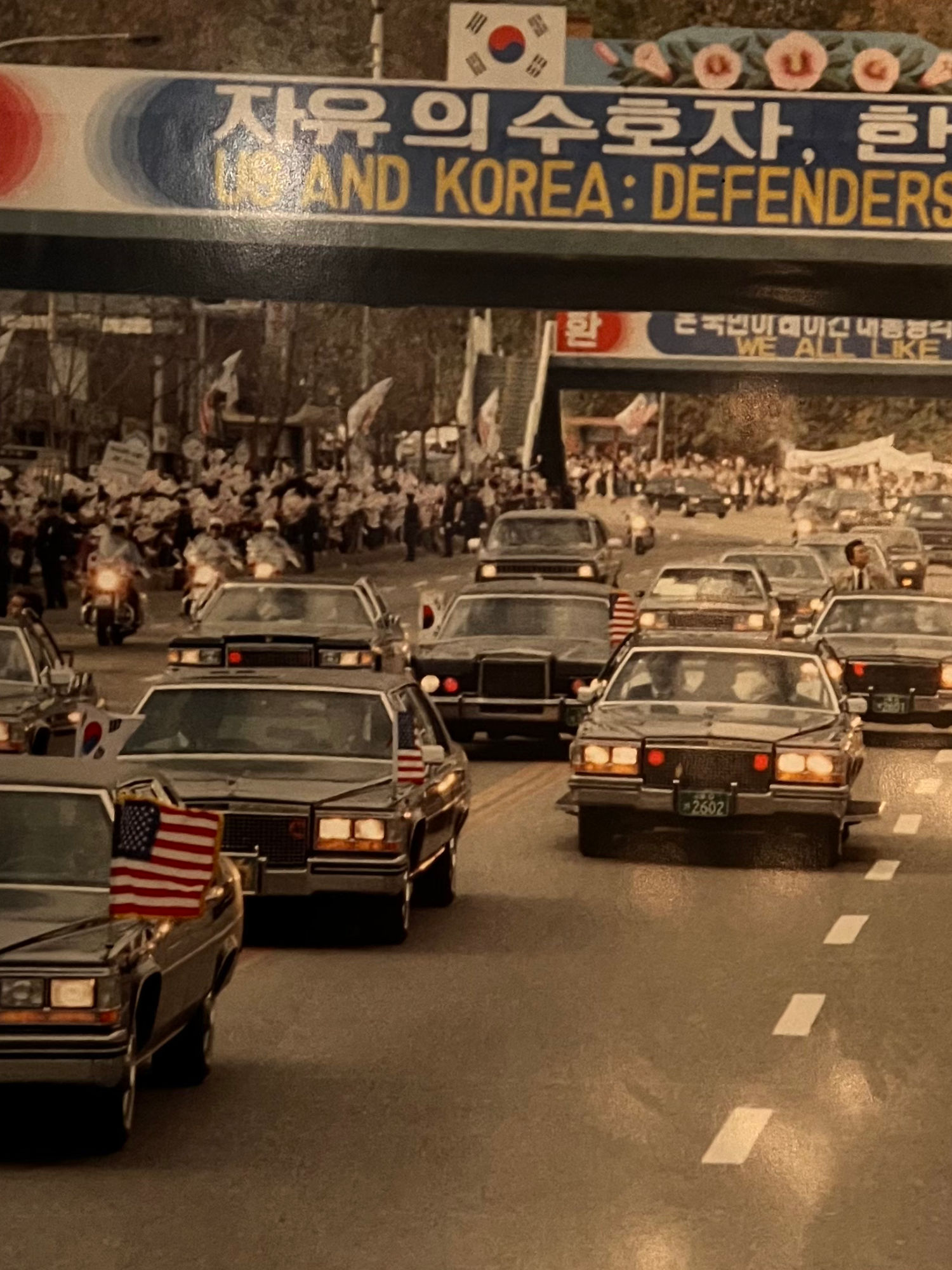
Motorcade through Seoul
During President Reagan's State visit, he met with President Chun, addressed the National Assembly, and visited U.S. troops along the Demilitarized Zone.
Reagan's Daily DiarySaturday, November 12, 1983
A last good bye with P.M.Nakasone & his very nice wife. We’re very fond of them. Then it was Marine 1 & A.F.1 & off to Seoul Korea-a 2 hr. & 5 min. flight. Landed at Kimpo air base. Pres. & Mrs. Chun awaited us. We went into the airport where crack troops were lined up, a great choir sang Battle Hymn of the Repub. and we did our formal greetings. Pres. Chun & I then went in one car, Nancy & Mrs. C. in another. Security here was overwhelming because of all the threats against me by the No. Koreans. The drive into town was fantastic-more than a million Koreans lining both sides of the streets waving Korean & Am. flags. Signs that said they loved us and seeing their faces you knew they meant it. Ambas. & Ceny Walker had moved out of the embassy residence so we could have it. Almost immediately we were on our way to address the General Assembly. There too we were well received. Then back to Blue House for meeting with the Pres. & a luncheon-really Korean. More meeting’s after lunch. Just a short time for a nap & change into Tux then back to Blue House for a state dinner. On way stopped at Embassy to meet with a group of leading Koreans & Americans. Could only stay a few minutes-we were delayed because one of the bomb sniffing dogs acted up about an elevator shaft. Other dogs were brought in & didn’t act as if there was a problem. On to the State Dinner-a magnificent setting. My partner, Mrs. Chun. She is a most delightful person. She & Nancy buddied up like 2 school chums. Afterward Korean entertainment and it was magic, the grace & beauty of the performers was like nothing we’ve ever seen. I wish I could bring them to America.Key Facts
- President Reagan travels to Seoul, South Korea from Tokyo, Japan.
- President Reagan addresses the General Assembly of South Korea.
RONALD REAGANAddress Before the Korean National Assembly in SeoulNovember 12, 1983
Speaker Chae, Vice Speaker Yun, Vice Speaker Koh, distinguished Members of the National Assembly, and honored guests:
I'm privileged to be among such friends. I stand in your Assembly as Presidents Eisenhower and Johnson have stood before me. And I reaffirm, as they did, America's support and friendship for the Republic of Korea and its people.
Not long after the war on this peninsula, your President paid a visit to Washington. In his remarks at the state dinner, President Eisenhower spoke of the Korean people's courage, stamina, and self-sacrifice. He spoke of America's pride in joining with the Korean people to prevent their enslavement by the North. In response, your first President expressed his country's deep, deep appreciation for what America had done. He concluded by saying, "I tell you, my friends, if I live hundreds of years, we will never be able to do enough to pay our debt of gratitude to you."
Well, I have come today to tell the people of this great nation: Your debt has long been repaid. Your loyalty, your friendship, your progress, your determination to build something better for your people has proven many times over the depth of your gratitude. In these days of turmoil and testing, the American people are very thankful for such a constant and devoted ally. Today, America is grateful to you.
And we have long been friends. Over a hundred years ago when American ships first approached Korea, our people knew almost nothing of each other. Yet, the first words from the kingdom of Chosun to the emissaries from America were words of welcome and hope. I would like to read part of that greeting to the Americans, because it tells much of the Korean people's character.
"Of what country are you? . . . are you well after your journey of 10,000 le through winds and waves? Is it your plan to barter merchandise . . . or do you rather wish to pass by to other places and to return to your native land? All under heaven are of one original nature, clothes and hats are very different and language is not the same, yet they can treat each other with mutual friendship. What your wish is, please make it known. . . ."
The journey from America is now swift. The winds and waves no longer endanger our way. But the rules of conduct which assist travelers are the same today as they were over a century ago, or even in ancient times. The weary are restored, the sick healed, the lost sheltered and returned safely to their way. This is so on all continents among civilized nations.
Our world is sadder today, because these ancient and honorable practices could not protect the lives of some recent travelers. Instead of offering assistance to a lost civilian airliner, the Soviet Union attacked. Instead of offering condolences, it issued denials. Instead of offering reassurances, it repeated its threats. Even in the search for our dead, the Soviet Union barred the way. This behavior chilled the entire world. The people of Korea and the United States shared a special grief and anger.
My nation's prayers went out to the Korean families who lost loved ones even as we prayed for our own. May I ask you today to pause for a moment of silence for those who perished. Please join me in this tribute in which the spirit of our two peoples will be as one.
[The moment of silence was observed.]
Amen.
In recent weeks, our grief deepened. The despicable North Korean attack in Rangoon deprived us of trusted advisers and friends. So many of those who died had won admirers in America as they studied with us or guided us with their counsel. I personally recall the wisdom and composure of Foreign Minister Lee, with whom I met in Washington just a few short months ago. To the families and countrymen of all those who were lost, America expresses its deep sorrow.
We also pledge to work with your government and others in the international community to censure North Korea for its uncivilized behavior. Let every aggressor hear our words, because Americans and Koreans speak with one voice. People who are free will not be slaves, and freedom will not be lost in the Republic of Korea.
We in the United States have suffered a similar savage act of terrorism in recent weeks. Our marines in Lebanon were murdered by madmen who cannot comprehend words like "reason" or "decency." They seek to destroy not only peace but those who search for peace. We bear the pain of our loses just as you bear the pain of yours. As we share friendship, we also share grief.
I know citizens of both our countries as well as those of other nations do not understand the meaning of such tragedies. They wonder why there must be such hate. Of course, regrettably there is no easy answer. We can place greater value on our true friends and allies. We can stand more firmly by those principles that give us strength and guide us, and we can remember that some attack us because we symbolize what they do not: hope, promise, the future. Nothing exemplifies this better than the progress of Korea. Korea is proof that people's lives can be better. And I want my presence today to draw attention to a great contrast. I'm talking about the contrast between your economic miracle in the South and their economic failure in the North.
In the early years following World War II, the future of Korea and of all Asia was very much in doubt. Against the hopes of Korea and other new nations for prosperity and freedom stood the legacies of war, poverty, and colonial rule. In the background of this struggle, the great ideological issues of our era were heard: Would the future of the region be democratic or totalitarian? Communism, at that time, seemed to offer rapid industrialization. The notion that the people of the region should govern their own lives seemed to some an impractical and undue luxury. But Americans and the people of Korea shared a different vision of the future.
Then North Korea burst across the border, intent on destroying this country. We were a world weary of war, but we did not hesitate. The United States, as well as other nations of the world came to your aid against the aggression, and tens of thousands of Americans gave their lives in defense of freedom.
As heavy as this price was, the Korean people paid an even heavier one. Civilian deaths mounted to the hundreds of thousands. President Johnson said before this very Assembly, "Who will ever know how many children starved? How many refugees lie in unmarked graves along the roads south? There is hardly a Korean family which did not lose a loved one in the assault from the North."
In 1951, in the midst of the war, General Douglas MacArthur addressed a Joint Session of our Congress. He spoke of you, saying, "The magnificence of the courage and fortitude of the Korean people defies description." As he spoke those words, our Congress interrupted him with applause for you and your people.
After the war, Koreans displayed that same fortitude. Korea faced every conceivable difficulty. Cities were in ruins; millions were homeless and without jobs; factories were idle or destroyed; hunger was widespread; the transportation system was dismembered; and the economy was devastated as a result of all these plagues. And what did the Korean people do? You rebuilt your lives, your families, your homes, your towns, your businesses, your country. And today the world speaks of the Korean economic miracle.
The progress of the Korean economy is virtually without precedent. With few natural resources other than the intelligence and energy of your people, in one generation you have transformed this country from the devastation of war to the threshold of full development.
Per capita income has risen from about $80 in 1961 to more than 20 times -- $1,700 today. Korea has become an industrial power, a major trading nation, and an economic model for developing nations throughout the world. And you have earned the growing respect of the international community. This is recognized in your expanding role as host to numerous international events, including the 1986 Asian games and the 1988 Olympics.
Now as the years have passed, we know our vision was the proper one. North Korea is one of the most repressive societies on Earth. It does not prosper; it arms. The rapid progress of your economy and the stagnation of the North has demonstrated perhaps more clearly here than anywhere else the value of a free economic system. Let the world look long and hard at both sides of the 38th parallel and then ask: "Which side enjoys a better life?"
The other side claims to be the wave of the future. Well, if that's true, why do they need barriers, troops, and bullets to keep their people in? The tide of history is a freedom tide, and communism cannot and will not hold it back.
The United States knows what you've accomplished here. In the 25 years following the war, America provided almost $5\1/2\ billion in economic aid. Today that amounts to less than 6 months' trade between us. That trade is virtually in balance. We are at once Korea's largest market and largest source of supplies. We're a leading source of the investment and technology needed to fuel further development. Korea is our ninth largest trading partner, and our trade is growing.
Korea's rapid development benefited greatly from the free flow of trade which characterized the 1960's and 1970's. Today, in many countries, the call for protectionism is raised. I ask Korea to join with the United States in rejecting those protectionist pressures to ensure that the growth you've enjoyed is not endangered by a maze of restrictive practices.
And just as we work together toward prosperity, we work toward security. Let me make one thing very plain. You are not alone, people of Korea. America is your friend, and we are with you.
This year marks the 30th anniversary of the mutual defense treaty between the United States and the Republic of Korea. The preamble to that treaty affirms the determination of our two countries to oppose aggression and to strengthen peace in the Pacific. We remain firmly committed to that treaty. We seek peace on the peninsula. And that is why United States soldiers serve side by side with Korean soldiers along your demilitarized zone. They symbolize the United States commitment to your security and the security of the region. The United States will stand resolutely by you, just as we stand with our allies in Europe and around the world.
In Korea, especially, we have learned the painful consequences of weakness. I am fully aware of the threats you face only a few miles from here. North Korea is waging a campaign of intimidation. Their country is on a war footing, with some 50 divisions and brigades and 750 combat aircraft. The North has dug tunnels under the demilitarized zone in their preparations for war. They are perched and primed for conflict. They attacked you in Rangoon, and yet, in spite of such constant threats from the North, you have progressed.
Our most heartfelt wish is that one day the vigil will no longer be needed. America shares your belief that confrontation between North and South is not inevitable. Even as we stand with you to resist aggression from the North, we will work with you to strengthen the peace on the peninsula.
Korea today remains the most firmly divided of the states whose division stemmed from World War II. Austrian unity was reestablished peacefully 10 years after the war. Germany remains divided, but some of the pain of that division has been eased by the inner-German agreement of a decade ago. I know the Korean people also long for reconciliation. We believe that it must be for the people of this peninsula to work toward that reconciliation, and we applaud the efforts you've made to begin a dialog. For our part, we would, as we've often stressed, be willing to participate in discussions with North Korea in any forum in which the Republic of Korea was equally represented. The essential way forward is through direct discussions between South and North.
Americans have watched with a mixture of sadness and joy your campaign to reunite families separated by war. We have followed the stories of sisters torn apart at the moment of their parents' deaths; of small children swept away in the tides of war; of people who have grown old not knowing whether their families live or have perished.
I've heard about the program that uses television to reunite families that have been torn apart. Today, I urge North Korea: It is time to participate in this TV reunification program and to allow your people to appear. I would say to them, whatever your political differences with the South, what harm can be done by letting the innocent families from North and South know of their loved ones' health and welfare? Full reunification of families and peoples is a most basic human right.
Until that day arrives, the United States, like the Republic of Korea, accepts the existing reality of two Korean States and supports steps leading to improved relations among those states and their allies.
We have also joined with you over the past 2 years in proposing measures which, if accepted, would reduce the risk of miscalculation and the likelihood of violence on the peninsula. The proposals we have made, such as mutual notification and observation of military exercises, are similar to ones negotiated in Europe and observed by NATO and the Warsaw Pact. These proposals are not intended to address fundamental political issues, but simply to make this heavily armed peninsula a safer place. For we must not forget that on the peninsula today there are several times more men under arms and vastly more firepower than in June of 1950. We will continue to support efforts to reduce tensions and the risks of war.
I have spoken of the need for vigilance and strength to deter aggression and preserve peace and economic progress, but there is another source of strength, and it is well represented in this Assembly. The development of democratic political institutions is the surest means to build the national consensus that is the foundation of true security.
The United States realizes how difficult political development is when, even as we speak, a shell from the North could destroy this Assembly. My nation realizes the complexities of keeping a peace so that the economic miracle can continue to increase the standard of living of your people. The United States welcomes the goals that you have set for political development and increased respect for human rights for democratic practices. We welcome President Chun's farsighted plans for a constitutional transfer of power in 1988. Other measures for further development of Korean political life will be equally important and will have our warm support.
Now, this will not be a simple process because of the ever-present threat from the North. But I wish to assure you once again of America's unwavering support and the high regard of democratic peoples everywhere as you take the bold and necessary steps toward political development.
Over 100 years ago you asked earlier American travelers to make their wishes known. Well, I come today to you with our answer: Our wish is for peace and prosperity and freedom for an old and valued ally.
In Washington several weeks ago, a memorial service was held for those who had perished on Flight 007. During that service, a prayer was read. I would like to read you that prayer, because it is a prayer for all mankind.
"O God . . .
Look with compassion on the whole human family;
Take away the arrogance and hatred which infect our hearts;
Break down the walls that separate us;
Unite us in bonds of love;
And work through our struggle and confusion to accomplish your purposes on earth;
That, in your good time, all the nations and races may serve you in harmony . . . ."
That, too, is our wish and prayer. Anyonghi keshipshiyo. [Stay in peace.]
Thank you, and God bless you.
NOTEPresident Reagan spoke at 12:30 p.m. in the Assembly Chamber at the National Assembly Building. He was introduced by Chae MunShich, Speaker of the National Assembly.Prior to the Assembly session, the President and Mrs. Reagan attended a tea in the Speaker's Reception Room. Following the President's address, he and Mrs. Reagan attended a reception with National Assembly leaders in the Assembly Lobby.
WIKIPEDIAOfficially the Republic of Korea (ROK)
A country in East Asia. It constitutes the southern part of the Korean Peninsula and borders North Korea along the Korean Demilitarized Zone. The country's western border is formed by the Yellow Sea, while its eastern border is defined by the Sea of Japan. South Korea claims to be the sole legitimate government of the entire peninsula and adjacent islands. It has a population of 51.96 million, of which roughly half live in the Seoul Capital Area, the fourth most populous metropolitan area in the world. Other major cities include Incheon, Busan, and Daegu.The Korean Peninsula was inhabited as early as the Lower Paleolithic period. Its first kingdom was noted in Chinese records in the early 7th century BCE. Following the unification of the Three Kingdoms of Korea into Silla and Balhae in the late 7th century, Korea was ruled by the Goryeo dynasty (918–1392) and the Joseon dynasty (1392–1897). The succeeding Korean Empire (1897–1910) was annexed in 1910 into the Empire of Japan. Japanese rule ended following Japan's surrender in World War II, after which Korea was divided into two zones: a northern zone occupied by the Soviet Union, and a southern zone occupied by the United States. After negotiations on reunification failed, the southern zone became the Republic of Korea in August 1948, while the northern zone became the communist Democratic People's Republic of Korea the following month.
In 1950, a North Korean invasion began the Korean War, which ended in 1953 after extensive fighting involving the American-led United Nations Command and the People's Volunteer Army from China with Soviet assistance. The war left 3 million Koreans dead and the economy in ruins. The authoritarian First Republic of Korea led by Syngman Rhee was overthrown in the April Revolution of 1960. However, the Second Republic was incompetent as it couldn't control the revolutionary fervor. The May 16 coup of 1961 led by Park Chung Hee put an end to the Second Republic, signaling the start of the Third Republic in 1963. South Korea's devastated economy began to soar under Park's leadership, recording the fastest rise in average GDP per capita. Despite lacking natural resources, the nation rapidly developed to become one of the Four Asian Tigers based on international trade and economic globalization, integrating itself within the world economy with export-oriented industrialization. The Fourth Republic was established after the October Restoration of 1972, in which Park wielded absolute power. The Yushin Constitution declared that the president could suspend basic human rights and appoint a third of the parliament. Suppression of the opposition and human rights abuse by the government became more severe in this period. Even after Park's assassination in 1979, the authoritarian rule continued in the Fifth Republic led by Chun Doo-hwan, which violently seized power by two coups and brutally suppressing the Gwangju Uprising. The June Democratic Struggle of 1987 ended authoritarian rule, forming the current Sixth Republic. The country is now considered among the most advanced democracies in Asia.
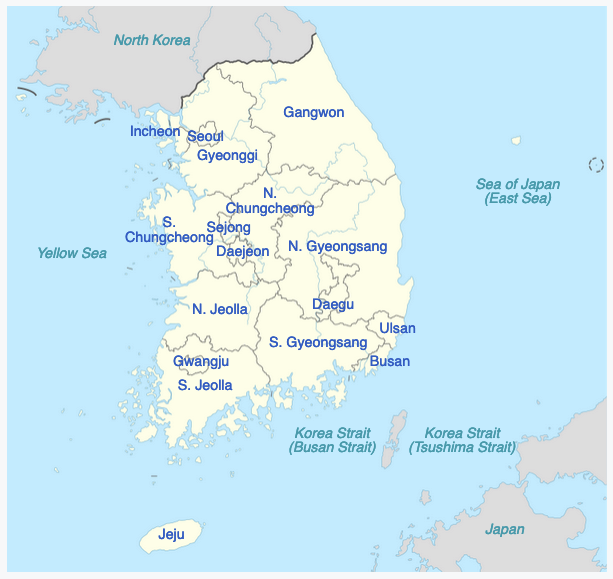
- The major administrative divisions in South Korea are eight provinces, one special self-governing province, six metropolitan cities (self-governing cities that are not part of any province), one special city and one special self-governing city.
- South Korea maintains a unitary presidential republic under the 1987 constitution with a unicameral legislature, the National Assembly.
- It is considered a regional power and a developed country, with its economy ranked as the world's thirteenth-largest by nominal GDP and the fourteenth-largest by GDP (PPP).
- In recent years, the country has been facing an aging population and the lowest fertility rate in the world.
- Its citizens enjoy one of the world's fastest Internet connection speeds and densest high-speed railway networks.
- The country is the world's ninth-largest exporter and ninth-largest importer.
- Its armed forces are ranked as one of the world's strongest militaries, with the world's second-largest standing army by military and paramilitary personnel.
- In the 21st century, South Korea has been renowned for its globally influential pop culture, particularly in music, TV dramas, and cinema, a phenomenon referred to as the Korean Wave.
- It is a member of the OECD's Development Assistance Committee, the G20, the IPEF, and the Paris Club.
- About 3,000 islands, mostly small and uninhabited, lie off the western and southern coasts of South Korea.
- South Korea tends to have a humid continental climate and a humid subtropical climate, and is affected by the East Asian monsoon, with precipitation heavier in summer during a short rainy season called jangma, which begins end of June and lasts through the end of July. Winters can be extremely cold with the minimum temperature dropping below −4 F in the inland region of the country: in Seoul, the average January temperature range is 19 to 34 F, and the average August temperature range is 72 to 86 F.
- Like many democratic states, South Korea has a government divided into three branches: executive, judicial, and legislative. Although South Korea experienced a series of military dictatorships from the 1960s until the 1980s, it has since developed into a successful liberal democracy.
- Unresolved tension with North Korea has prompted South Korea to allocate 2.6% of its GDP and 15% of all government spending to its military (government share of GDP: 14.967%), while maintaining compulsory conscription for men. Consequently, the ROK Armed Forces is one of the largest and most powerful standing armed forces in the world with a reported personnel strength of 3,600,000 in 2022 (500,000 active and 3,100,000 reserve).
- The United States has stationed a substantial contingent of troops to defend South Korea. There are approximately 28,500 U.S. military personnel stationed in South Korea, most of them serving one year unaccompanied tours.
- South Korea's population was estimated to be around 50.8 million (2016). The country is noted for its population density, which was an estimated 505 per square kilometer in 2015, more than 10 times the global average. Aside from micro-states and city-states, South Korea is the world's third most densely-populated country. Most South Koreans live in urban areas because of rapid migration from the countryside during the country's quick economic expansion in the 1970s, 1980s and 1990s.
- The Seoul National Capital Area has 24.5 million inhabitants (about half of South Korea's entire population) making it the world's second largest metropolitan area. Other major cities include Busan (3.5 million), Incheon (3.0 million), Daegu (2.5 million), Daejeon (1.4 million), Gwangju (1.4 million) and Ulsan (1.1 million).
- South Korea is considered one of the most ethnically homogeneous societies in the world with ethnic Koreans representing approximately 96% of total population.
- South Korea's birth rate was the world's lowest in 2009, at an annual rate of approximately 9 births per 1000 people.
- South Korea is one of the top-performing Organization for Economic Cooperation and Development (OECD) countries in reading literacy, mathematics and sciences with the average student scoring 519, compared with the OECD average of 492, placing it ninth in the world. The country has one of the world's highest-educated labor forces among OECD countries. The country is well known for its highly feverish outlook on education, where its national obsession with education has been called "education fever".
- Korean is the official language of South Korea and is classified by most linguists as a language isolate. It incorporates a significant number of loan words from Chinese. Korean uses an indigenous writing system called Hangul, created in 1446 by King Sejong, to provide a convenient alternative to the Classical Chinese Hanja characters that were difficult to learn and did not fit the Korean language well. Almost all South Korean students today learn English throughout their education.
- According to a 2015 census, 27.6% of the population were Christians (19.7% identified themselves as Protestants, 7.9% as Roman Catholics) and 15.5% were Buddhists. Christianity is South Korea's largest organized religion, accounting for more than half of all South Korean adherents of religious organizations. There are approximately 13.5 million Christians in South Korea today; about two thirds of them belonging to Protestant churches, and the rest to the Catholic Church.
- Life expectancy has been rising rapidly and South Korea ranked 6th in the world for life expectancy at 83.5 years in 2023. It also has the third highest health adjusted life expectancy in the world. Suicide in South Korea is the 12th highest in the world according to the World Health Organization, as well as the highest suicide rate in the OECD.
- South Korea's mixed economy is the 11th largest GDP at nominal and the 14th largest GDP by purchasing power parity in the world, identifying it as one of the G20 major economies. It is a developed country with a high-income economy and is the most industrialized member country of the OECD. South Korean brands such as LG Electronics and Samsung are internationally famous and garnered South Korea's reputation for its quality electronics and other manufactured goods. Despite the economy's high growth potential and apparent structural stability, the country suffers damage to its credit rating in the stock market because of the belligerence of North Korea in times of deep military crises, which has an adverse effect on its financial markets.
- Its massive investment in education has taken the country from mass illiteracy to a major international technological powerhouse. The country's national economy benefits from a highly skilled workforce and is among the most educated countries in the world with one of the highest percentages of its citizens holding a tertiary education degree.
- South Korea has a technologically advanced transport network consisting of high-speed railways, highways, bus routes, ferry services, and air routes that crisscross the country.
- In 2019, more than 17 million foreign tourists visited South Korea.
- Korean cuisine is largely based on rice, noodles, tofu, vegetables, fish and meats. Traditional meals are noted for the number of side dishes, banchan, which accompany steam-cooked short-grain rice. Every meal is accompanied by numerous banchan. Kimchi, a fermented, usually spicy vegetable dish is commonly served at every meal and is one of the best known dishes. Korean cuisine usually involves heavy seasoning with sesame oil, doenjang (a type of fermented soybean paste), soy sauce, salt, garlic, ginger, and gochujang (a hot pepper paste). Other well-known dishes are bulgogi, grilled marinated beef; gimbap; and tteokbokki, a spicy snack consisting of rice cake seasoned with gochujang or a spicy chili paste. Soups are also a common part of a meal and are served as part of the main course rather than at the beginning or the end of the meal.
- Korea is unique among East Asian countries in its use of metal chopsticks. Metal chopsticks have been discovered in Goguryeo archaeological sites.
- The emergence of the pop group Seo Taiji and Boys in 1992 marked a turning point for South Korean popular music, also known as K-pop. K-pop idols are well known across Continental Asia, have found fame in the Western World, and have generated millions of dollars in export revenue in music markets beyond East Asia. K-pop first began to makes its mark outside of Continental and East Asia following the unexpected success of singer Psy's international music sensation, "Gangnam Style", which topped global music charts in 2012.
- The martial art taekwondo originated in Korea. Football has traditionally been regarded as the most popular sport in Korea, with baseball as the second. Basketball is a popular sport in the country as well. South Korea has won more medals in the Winter Olympics than any other Asian country, with a total of 45 (23 gold, 14 silver, and 8 bronze).
Both North and South Korea claim complete sovereignty over the entire peninsula and outlying islands. Despite mutual animosity, reconciliation efforts have continued since the initial separation between North and South Korea.
EtymologyThe name Korea is an exonym, although it was derived from a historical kingdom name, Goryeo (Revised Romanization) or Koryŏ (McCune–Reischauer). Goryeo was the shortened name officially adopted by Goguryeo in the 5th century and the name of its 10th-century successor state Goryeo. Visiting Arab and Persian merchants pronounced its name as "Korea". The modern name of Korea appears in the first Portuguese maps of 1568 by João vaz Dourado as Conrai and later in the late 16th century and early 17th century as Korea (Corea) in the maps of Teixeira Albernaz of 1630.The Korean name "Daehan Minguk" is sometimes used by South Koreans to refer to the Korean ethnicity (or "race") as a whole, rather than just the South Korean state.




